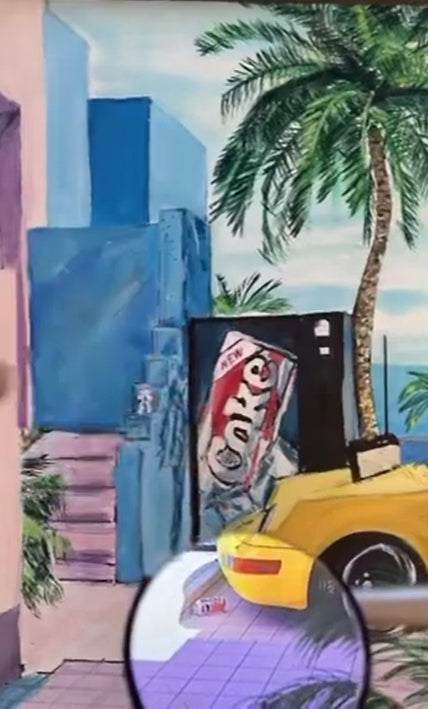How to Set Up & Use a Comparator Mirror
A comparator mirror is a unique tool that was designed to help artists recreate the techniques used by Dutch master Johannes Vermeer. This tool, which was rediscovered in the documentary "Tim's Vermeer," allows beginners or professional artists to reflect an image over their canvas and create a highly accurate rendering of the subject.
Here's how to use a comparator mirror in 5 easy steps:
Step 1: Choose your image
First, you'll need to choose the image that you want to draw/paint from using your comparator mirror. This could be a photograph or an image that you've found online, or even a scene you create yourself from putting multiple images together.
Once you've got your source picture, flip it upside down. If you don't it'll appear upside down in the reflection you'll see in your mirror.
Step 2: Reflect the image over your canvas (paper, or anything you want to make art on).
Once you've chosen your image, it's time to reflect it over your canvas with your comparator mirror. To do this, you'll need to place your image in front of the comparator mirror and put your canvas under your mirror.
(Here 👇, I'm using a picture from the first-dance at a friends wedding, which I gave to the newlyweds as a wedding gift)

Depending on how big or small you want your painting or drawing, you may want to play around with the placement of your comparator mirror, and the distance between your mirror and the canvas in order to get the size of the artwork you desire.
Step 4: (optional if you're painting): Trace the outline onto your canvas.
Once the image is reflected in the mirror above your canvas, you can begin tracing the outlines of the image onto your canvas using a pencil or other drawing tool if you'd like. You can be as precise as possible or as loose as you want during this step. Draw the outline with loose flowing lines - or draw the outline as precise as the image appears in your image.
Either way, you can see any mistakes you make instantly. So if you want to fix them, you can.
Step 5: Fill in the details.
After you've traced the outlines of the image onto your canvas, it's time to start filling in the details. This could involve using paint or other materials to create a highly accurate rendering of the subject. Look at the edge of the mirror. And move your head back and forth to compare the color of the paint on your canvas with the color of the image reflected in your mirror. It's as easy as that.
If the color on your canvas is too dark, add a little white to your color. If it's too light, then add a little black.
Move your head around the mirror to see the different parts of your image reflected over your canvas. Repeat this process until you're satisfied with the result.
Using a comparator mirror may take a few minutes to an hour to get used to. But it's a powerful tool for artists & enthusiasts who want to create stunning art.
Whether you're a professional artist or just starting out, if you're interested in art at all, you'll want to give this Ingenius tool a try.
For big and small pieces, I recommend this comparator mirror (Note: The bigger the picture you're painting or drawing - the easier it is.
For smaller pieces this one works just fine too.

